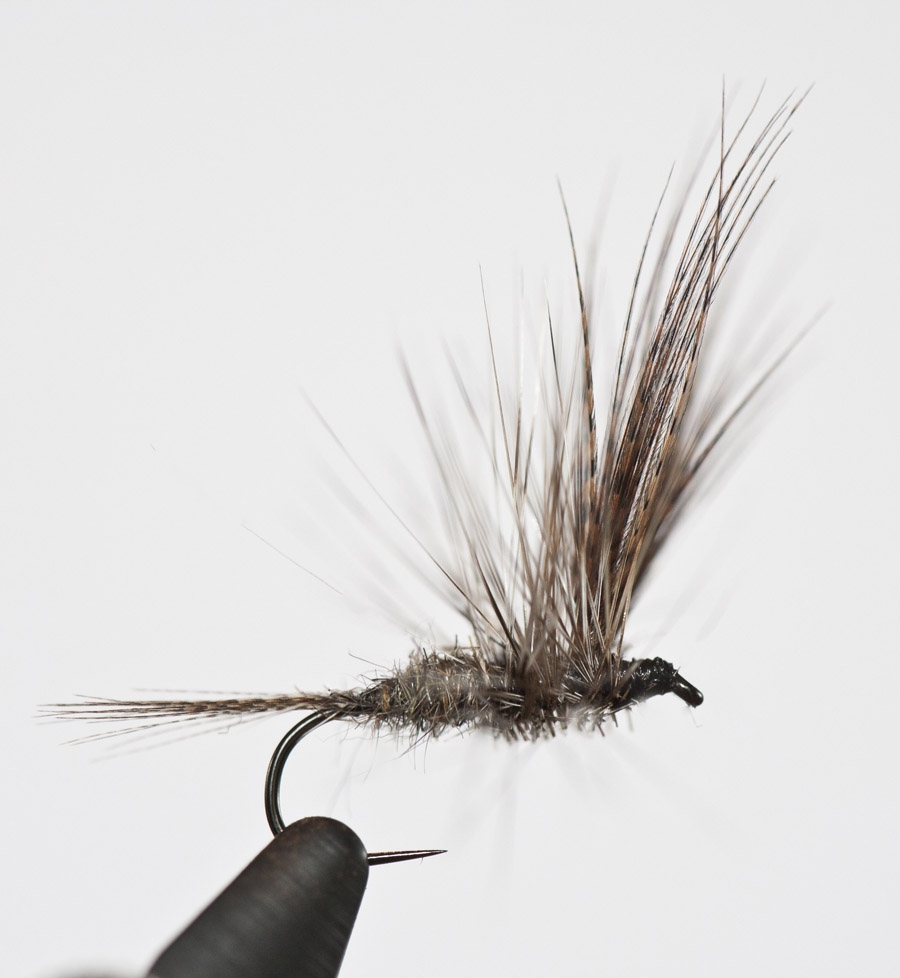Philip Bailey describes a dry fly he originated nearly 30 years ago that has proven successful on three continents, in 15 countries and on both stillwaters and streams. He says, ‘I have never been without it since 1986. At the time I had no idea that this fly, which I tied in dark and light shades, would prove so successful in all types of hatches.’
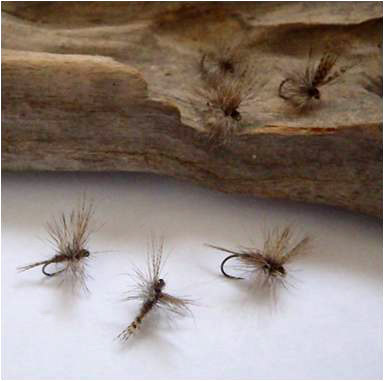
He goes on to say:
I developed this pattern in 1986 in an attempt to produce a dry fly that was a generalist pattern that incorporated the right sort of trigger points to fool trout. Originally I called it the ‘50:50 Fly’ as the tail was 50% the length of the hook shank and about half the length of a normal tail on a dry fly. The body was 50% of the hook shank with the hackle forming the remaining 50%. And to complete the fly 50% of the hackle was removed under the body.
Its inauguration was in the summer of 1986/87. Tony Brothers (my old fishing buddy who has sadly passed away) and I went across to fish in Tasmania but instead of heading ‘up top’ to the Western Lakes we decided to fish the lowland streams around Launceston. For the first part of the week we stayed at the Kings Meadow Hotel and fished the lower Macquarie River and Brumby’s Creek system.
However, the second part of the trip we fished the South Esk and Break O Day rivers stationing ourselves in Ross. The first day was on the Break O Day and as we arrived mid-morning we could already see fish rising steadily. As we climbed the fence I heard Tony’s cry “they’re on black spinners” and off he went downstream casting madly at rising fish with his Noel Jetson black spinner. I, on the other, had just stopped on the pool where we started and decided to fish a bit more cautiously. I don’t know what made me take out the 50:50 Fly and tie it on, but it quickly tricked a good fish and both of us caught fish on the pattern before the spinner fall ended and the fish stopped rising.
It was the most fish I had ever taken in one fishing session in those days and I was chuffed that I had done so well. As we drove back to the hotel in Ross we discussed the new pattern and it was Tony’s view that the fly needed a better name. His suggestion was the ‘Man O Ross’ as we were staying in the Man O Ross hotel and my second name was Ross.
The fly went on to become successful on the lakes in Tasmania when fishing to cruising fish while polaroiding or to tailing fish in the western lakes. It came into its own in 1988 and 1989 when Dr Iven Affleck, Dr Andy Hodson (two other fishing buddies of mine) and I fished the Eucumbene in December each year when the Chronomids (buzzers) were balling up. Andy coined it the M.O.R. for short and both names have stuck.
It can represent an emerging fly, a trapped insect, a dun, a caddis, a buzzer and at times even a beetle. It is simply a ‘generalist ‘pattern that works all the time. I have used it with success in dun hatches, caddis hatches, when buzzers are balling, and when there are beetles about. It is great for fishing static on lakes. I have even used it as a top dropper in a team of flies.
Tying the fly:
I tie this on sizes 12, 14, 16 & 18. Originally I used a Kamasan B160 because I liked the wide gape. These days I user a lighter hook and my preferred hook is the Partridge SLD barbless.
(Note: The hook used in the steps tied and photographed below by Tom Sutcliffe is the Hanak model H 130 BL # 12 and the wing and tail are from a bronze Mallard flank feather.)
Place the hook in your vice and take the tying thread (black for the dark version, yellow for the light version) down the hook shank for 5-6 turns.
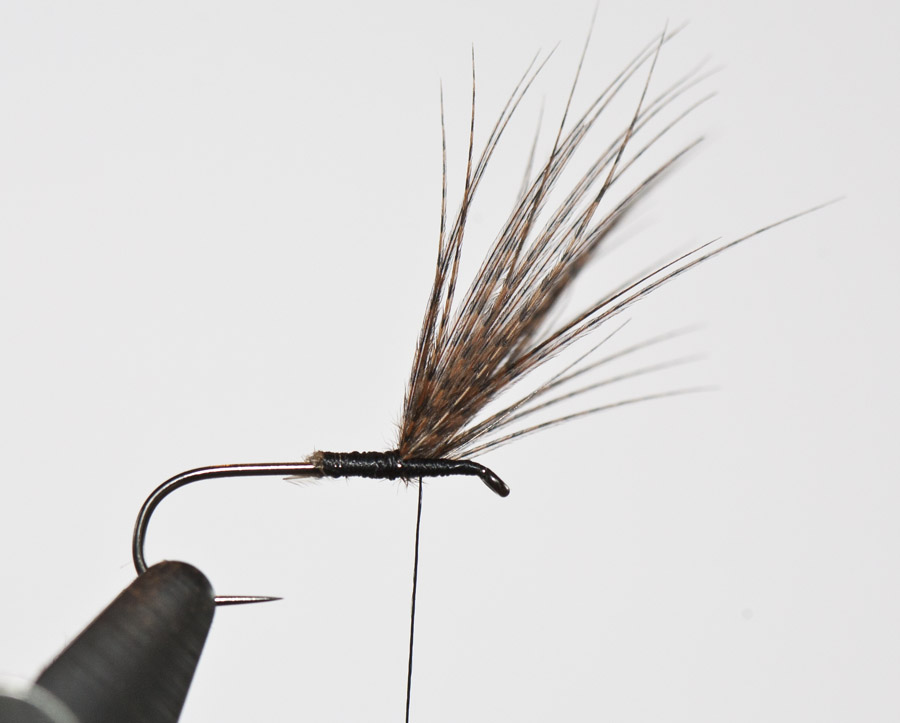
Click in images to enlarge
At this point tie in the wing. Roll it and then tie it over the eye of the hook. Pull it upright and place a few turns of thread to ‘cock’ it. Split it and figure of eight between to produce a rolled split wing. The correct position should see it slanting forward. Use Bronze Mallard for the dark and Lemon Wood duck (or equivalent) for the lighter version.
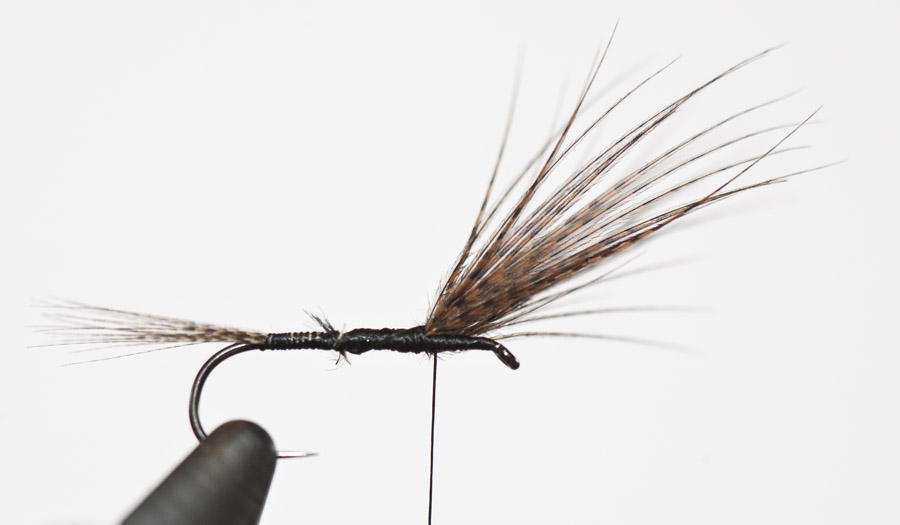
Trim off the excess and take the thread down to the end of the hook shank. Now take a smaller section of wing material and make sure all points line up. Tie this in short. A good gauge is to think about making a ‘tag’ rather than a tail. It must be short to give the correct profile.
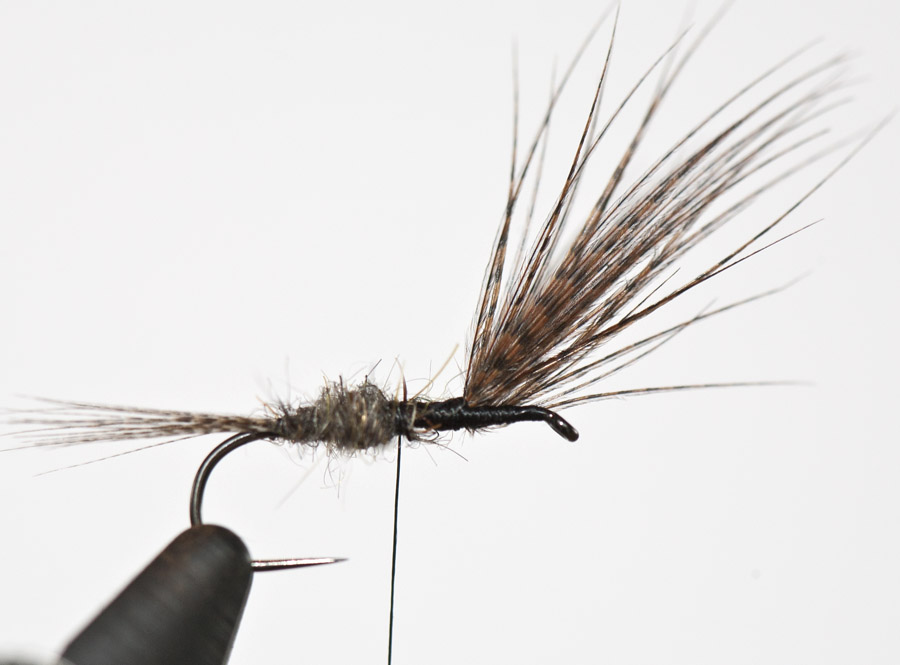
Trim the excess and then dub the body with hare’s ear dubbing to a point halfway along the hook shank.
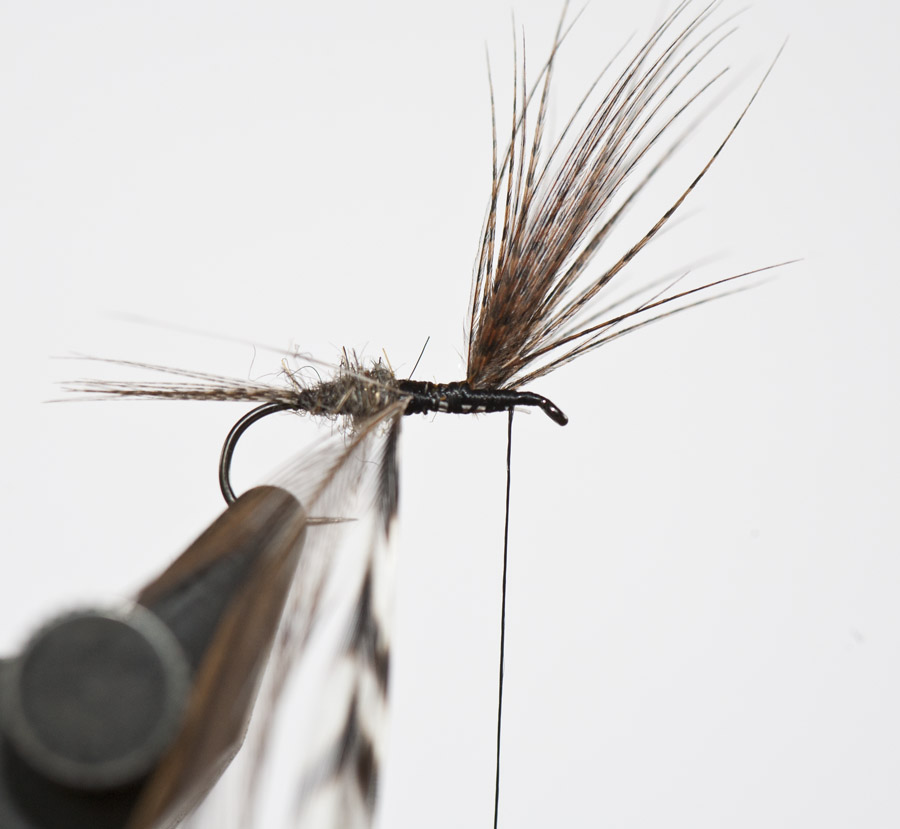
Prepare two hackles, one a grizzle hackle and the other either a ginger for the darker version or a dun for the lighter. The ginger or dun hackle is tied in and wound forward after the grizzle. Take 4 turns behind the wing and two in front with both hackles. This should fill up the remainder of the hook shank.
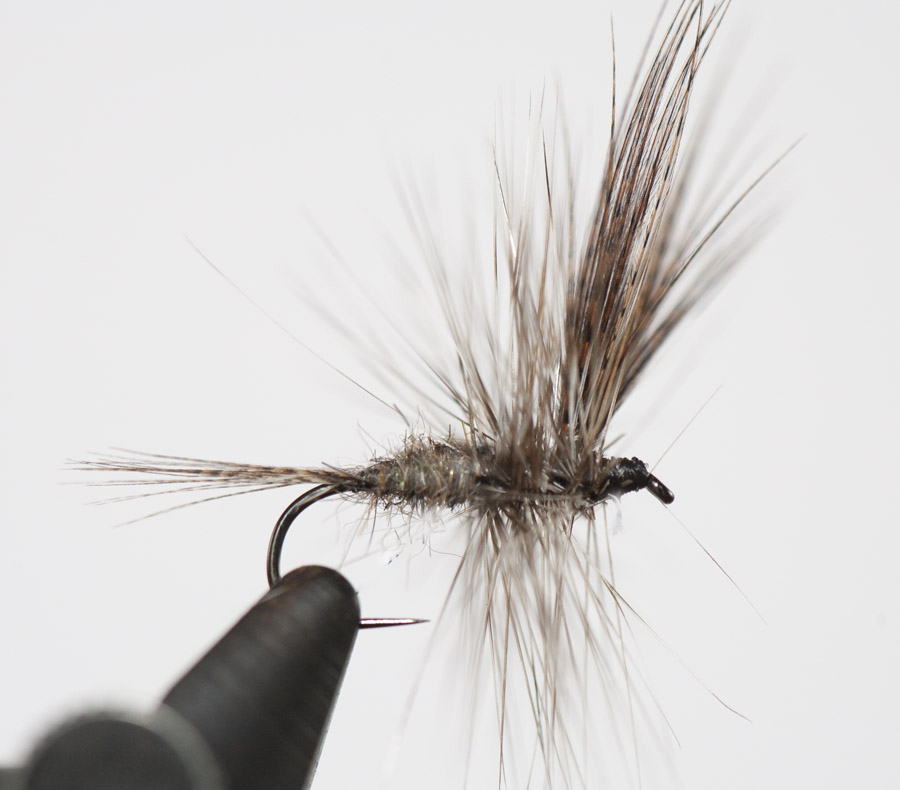
The grizzle hackle, together with the wings, creates an excellent UV Reflection trigger point, which is critical to trout locating food (See: The New Scientific Angling – Trout and Ultraviolet Vision – Reed F Curry 2009).
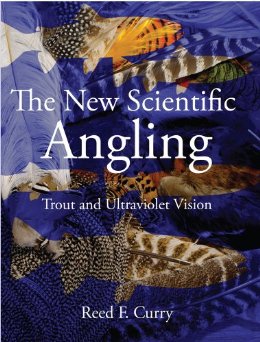
Tie off the hackles making sure to keep the head clean and then trim the hackles flat underneath in line with the body.
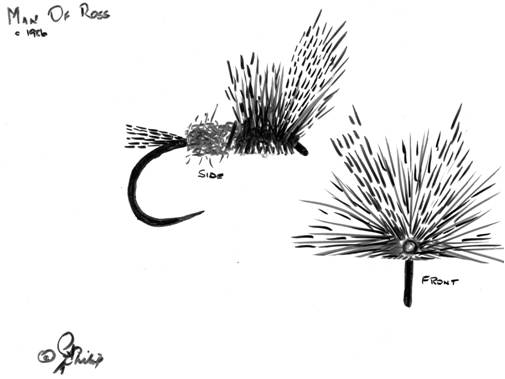
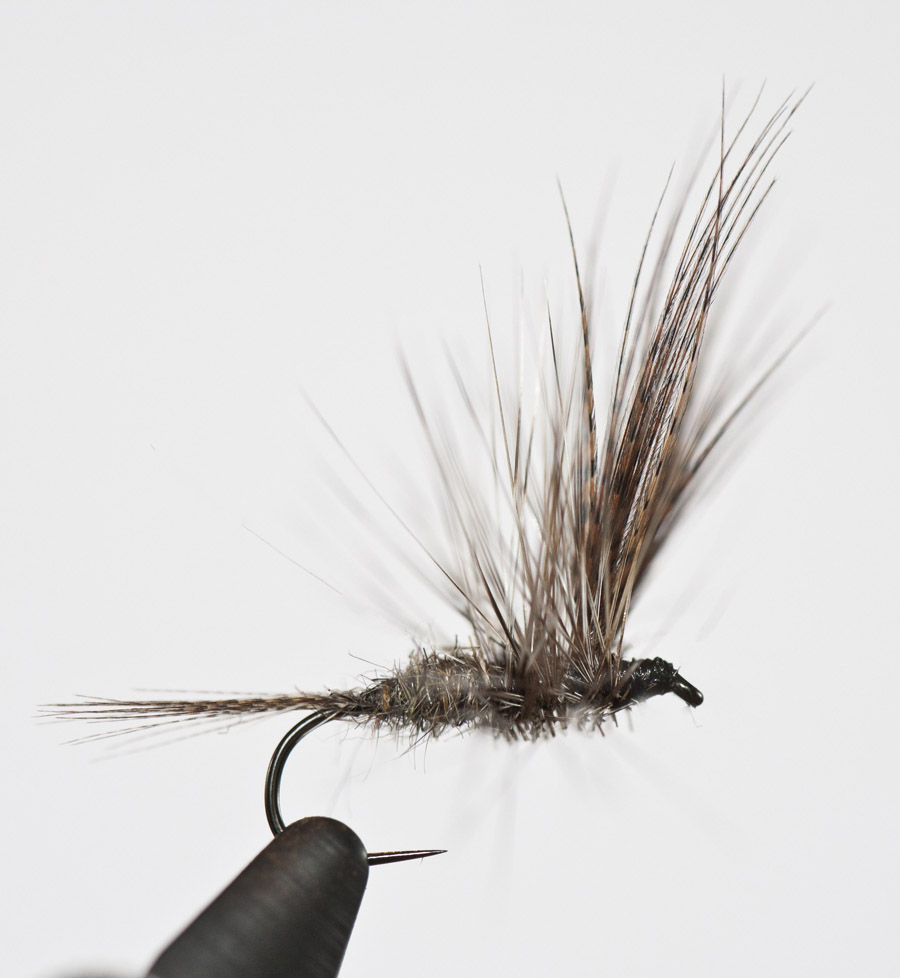
(Philip Bailey is the UK representative for Fly Fishing Masters Italy
UK Senior Casting Instructor www.flyfishingmasters.co.uk
Facebook - https://www.facebook.com/philip.bailey.357?ref=tn_tnmn)

